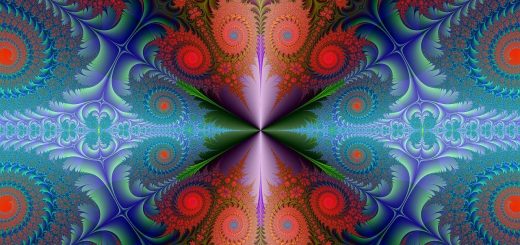The Japanese Yurei: Spirits of Vengeance

Before diving in, please note: This post is for informational purposes only. If you’d like to know more about how we approach topics, feel free to check out our friendly Disclaimer Page.
Hey there, amazing readers! 🖐️ Just a quick note: yes, we know there are a lot of ads here. Trust us, we get it—it’s not the prettiest look, but they help us keep this blog alive and kicking. Those pesky little ads cover the costs of all the behind-the-scenes magic, from hosting and tech stuff to creating content we hope you’ll love.
We’re committed to delivering quality posts, and your support (even just sticking around despite the ads) means everything to us. So, bear with us, and thanks for helping us keep the good vibes rolling. Now, on to the fun stuff! 😉
TRANSLATE BUTTON AT THE END OF THE ARTICLE
A Quick Overview
The world of Japanese folklore is filled with enchanting tales and mysterious beings, but few are as captivating or chilling as the Yurei.
These spirits of vengeance are not just figments of imagination; they represent deep-seated emotions and cultural values.
In this article, we’ll dive into the fascinating realm of Yurei, uncovering their origins, characteristics, and significance in modern society.
Get ready for a journey through ghostly narratives, traditional rituals, and the haunting beauty of Yurei-inspired art!
Unveiling the Mystique of Japanese Yurei Spirits
Yurei, often translated as "faint spirit" or "dimming spirit," are the restless souls of individuals who have died under tragic circumstances.
Imagine a spirit that lingers on Earth, seeking resolution for unfinished business.
Yurei often appear in white funeral garments, with long, unkempt hair and a haunting presence that sends shivers down the spine of anyone who believes in them.
These spirits evoke a sense of empathy.
After all, who hasn’t felt a little lost or vengeful in life?
The Yurei symbolizes a range of emotions, from grief to anger and despair, reflecting the complex nature of human experience.
Their stories remind us of the consequences of unresolved issues and the importance of peace.
The Cultural Roots of Yurei in Japanese Folklore
The roots of Yurei can be traced back to ancient Japanese beliefs surrounding death and the afterlife.
In Shintoism, the indigenous spiritual practice in Japan, it’s believed that spirits of the deceased can influence the living world.
This perspective is intertwined with Buddhist ideas about the cycle of rebirth and the importance of proper funerary rites.
Traditionally, the Japanese held elaborate funerals and memorial services to honor the deceased.
If these rites were neglected, the spirit could become a Yurei, unable to find peace.
This belief emphasizes the idea that the living must take responsibility for the deceased, respecting their memory and ensuring their peaceful passage to the afterlife.
Characteristics That Define Yurei: A Closer Look
What sets Yurei apart from other spirits?
Here are some defining characteristics:
Appearance: Dressed in white, the Yurei is often depicted with a flowing, ghostly form and disheveled hair.
Emotional State: Yurei typically embody strong emotions such as sorrow, anger, or resentment.
Behavior: They are known for haunting specific locations, often tied to their tragic ending.
Manifestations: Yurei can appear in dreams, provoke feelings of unease, or even cause physical disturbances in their environments.
Connection to Living: These spirits often seek vengeance or closure, regretting their untimely deaths.
Understanding these traits helps explain why Yurei are such a significant part of Japanese folklore and the cultural psyche.
The Historical Context Behind Yurei Legends
In the Edo period (1603-1868), the belief in Yurei flourished.
During this time, Japan experienced societal changes, including the rise of literacy and the popularity of woodblock prints.
Stories of Yurei became widespread, often depicted in literature and art.
These narratives served not only as entertainment but also as cautionary tales, warning against neglecting one’s duties to the deceased.
One particularly notable tale is that of Okiku, a servant girl wronged by her master.
After being falsely accused of theft and murdered, her spirit became a Yurei, seeking vengeance on her master.
This story, "Banchō Sarayashiki," highlights the tragic aspects of Yurei legends and their connection to themes of betrayal and justice.
Yurei vs. Other Ghosts: What Sets Them Apart?
While ghosts exist in many cultures, Yurei stand out for several reasons:
Cultural Context: Yurei are deeply rooted in Japan’s unique blend of Shinto and Buddhist beliefs.
Emotional Depth: Unlike many western ghosts, Yurei often embody complex emotions tied to their life experiences and unresolved issues.
Ritual Importance: There is a significant emphasis on appeasing Yurei through rituals and memorials to prevent them from causing harm.
Visual Representation: The iconic appearance of Yurei in white attire and unkempt hair adds to their aura of sorrow and mystery.
This combination of factors makes Yurei a uniquely haunting presence in Japanese culture.
The Role of Vengeance in Yurei Narratives
Vengeance lies at the heart of many Yurei stories.
These spirits often seek retribution for wrongs done to them in life.
This theme resonates with people, as it taps into our innate sense of justice.
When a Yurei haunts, it often reflects the cultural belief that the wronged must have their grievances addressed.
Take the tale of Oiwa, a woman betrayed by her husband, who becomes a Yurei after her tragic death.
Her haunting serves as a reminder that unresolved injustices can linger, manifesting in the physical world.
The narratives surrounding Yurei illustrate the belief that vengeance is not just a personal matter but a societal concern that demands acknowledgment.
Iconic Yurei: Famous Spirits in Japanese History
Throughout history, several Yurei have become legendary, captivating audiences with their tragic tales.
Here are a few notable examples:
Okiku: As previously mentioned, she is a classic Yurei known for her tale of betrayal and revenge.
Oiwa: Another famous Yurei whose story has inspired countless adaptations in kabuki theater and literature.
Kichisaburo: Known for his tale of profound love and betrayal, Kichisaburo’s spirit becomes a Yurei, seeking to reunite with his lost love.
These stories are often passed down through generations, highlighting the importance of remembering and respecting those who have suffered.
Traditional Rituals to Appease the Yurei Spirits
To maintain harmony between the living and the dead, Japanese culture has developed rituals aimed at appeasing Yurei.
Here are some common practices:
Obon Festival: A major Buddhist event where families honor the spirits of their ancestors, inviting them home.
Kuyō: A memorial service held to honor the deceased, often involving offerings of food, flowers, and incense.
Spirit Altars: Families sometimes set up altars in their homes to keep the memory of deceased loved ones alive.
These rituals embody respect for both the deceased and the beliefs surrounding Yurei, emphasizing the connection between past and present.
Yurei in Modern Media: Film, Anime, and More!
As our cultural landscape evolves, Yurei continue to inspire contemporary media.
Films like "The Ring" and "Ju-on: The Grudge" have brought Yurei into the global spotlight, blending horror with deep emotional narratives.
These stories often reflect societal fears and anxieties, making them relevant across generations.
Anime and manga have also embraced Yurei themes, offering fresh takes on these classic tales.
Series like "Another" and "Yamishibai" showcase the haunting beauty of Yurei while exploring modern issues such as bullying and isolation.
This blending of old and new keeps the Yurei tradition alive and relatable.
How Yurei Influence Japanese Art and Literature
The impact of Yurei on Japanese art is profound.
Artists have used Yurei to explore themes of life, death, and the transient nature of existence.
Woodblock prints, known as ukiyo-e, frequently depict Yurei in both terrifying and beautiful ways, inviting viewers to contemplate the balance between fear and empathy.
Literature, too, has been enriched by Yurei narratives.
Writers like Lafcadio Hearn introduced Western audiences to these haunting tales, blending folklore with poetic storytelling.
Yurei are not just subjects of fright; they evoke deeper philosophical questions about existence and the human condition.
The Hauntingly Beautiful Aesthetics of Yurei Depictions
The visuals associated with Yurei are nothing short of captivating.
Artists often portray these spirits in flowing white garments, surrounded by mist or darkness.
The juxtaposition of beauty and horror creates an emotional resonance that draws viewers in.
In modern art, Yurei have inspired everything from fashion to graphic design.
The aesthetics of Yurei reflect a blend of traditional Japanese culture and contemporary interpretations, showcasing their lasting influence.
Embracing the Yurei: Lessons from the Spirits of Vengeance
What can we learn from Yurei?
These spirits remind us of the importance of closure and the need to address unresolved issues.
They embody emotions that are often difficult to express, urging us to confront feelings of anger, grief, and betrayal.
By acknowledging their stories, we can find ways to heal and move forward.
Yurei encourage us to honor our past while creating a peaceful present.
So, the next time you hear a Yurei story, remember: they are not just ghosts; they are reflections of our shared human experience.
Conclusion
Yurei are a captivating aspect of Japanese folklore, embodying emotions and narratives that resonate across cultures.
Their haunting tales remind us of the importance of addressing unresolved issues, respecting the deceased, and acknowledging the complexities of human emotion.
Whether through traditional rituals or modern media, the legacy of Yurei continues to impact and inspire.
So, let’s embrace these spirits of vengeance with an open heart and a curious mind!

The Enlightenment Journey is a remarkable collection of writings authored by a distinguished group of experts in the fields of spirituality, new age, and esoteric knowledge.
This anthology features a diverse assembly of well-experienced authors who bring their profound insights and credible perspectives to the forefront.
Each contributor possesses a wealth of knowledge and wisdom, making them authorities in their respective domains.
Together, they offer readers a transformative journey into the realms of spiritual growth, self-discovery, and esoteric enlightenment.
The Enlightenment Journey is a testament to the collective expertise of these luminaries, providing readers with a rich tapestry of ideas and information to illuminate their spiritual path.
Our Diverse Expertise 🌟
While our primary focus is on spirituality and esotericism, we are equally passionate about exploring a wide range of other topics and niches 🌍📚. Our experienced team is dedicated to delivering high-quality, informative content across various subjects ✨.
To ensure we provide the most accurate and valuable insights, we collaborate with trusted experts in their respective domains 🧑🏫👩🏫. This allows us to offer well-rounded perspectives and knowledge to our readers.
Our blog originally focused on spirituality and metaphysics, but we’ve since expanded to cover a wide range of niches. Don’t worry—we continue to publish a lot of articles on spirituality! Frequently visit our blog to explore our diverse content and stay tuned for more insightful reads.







